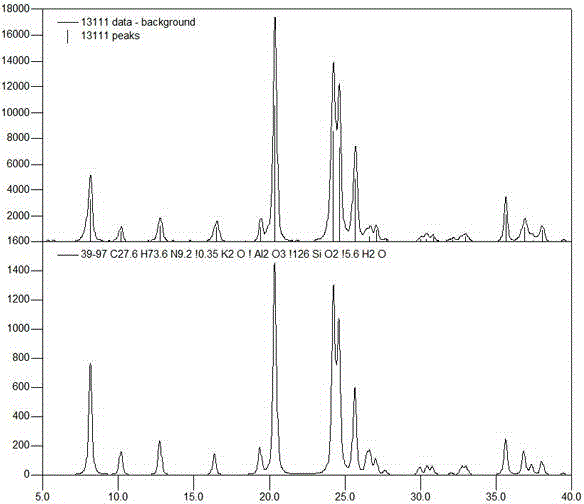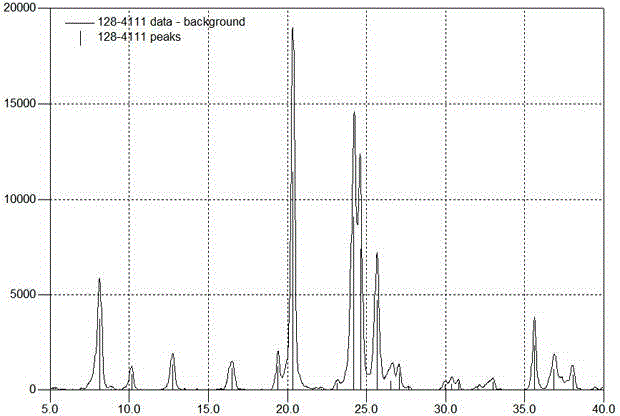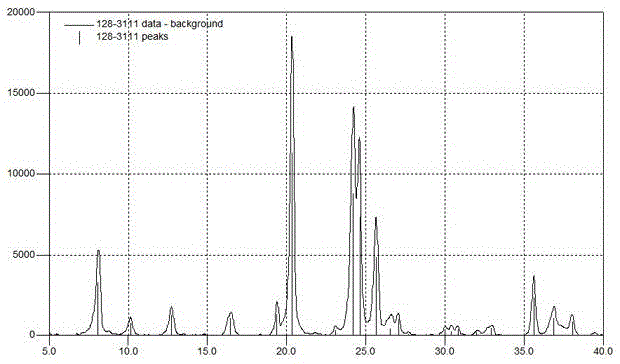Regeneration method of inactivated catalyst
A technology for deactivating catalysts and catalysts, applied in catalyst regeneration/reactivation, molecular sieve catalysts, chemical instruments and methods, etc., can solve problems such as difficult separation of macromolecular by-products, molecular sieve structure damage, and large amount of solvents. Hydrogen/dehydrogenation reactivity, improvement of dispersion, effect of avoiding aggregation
- Summary
- Abstract
- Description
- Claims
- Application Information
AI Technical Summary
Problems solved by technology
Method used
Image
Examples
Embodiment 1
[0040] Preparation of the catalyst E-1 of the present invention.
[0041] Add 1450 mL of organic solvent (the volume ratio of ethanol to benzene is 2:1) into a 2000 mL flask, and treat the deactivated catalyst FD-1 after 200 mL industrial operation. The catalyst number after 2.0 hours of distillation is Ca-1.
[0042] Take 100g of Ca-1 catalyst, add 11.8g of nickel nitrate (Nickel content 3.0wt%) solution to soak to prepare a nickel-containing sample with an atomic ratio of Ni to Pt of about 3:1, and then program-controlled firing in an air atmosphere For carbon, the specific steps are to heat up to 250°C for 10 hours at a heating rate of 3°C / min, and then continue to heat up to 410°C for 3 hours at a heating rate of 3°C / min to obtain the catalyst Ea-1 of the present invention.
[0043] The catalyst Ea-1 is reduced under a hydrogen atmosphere, and the specific conditions are: the hydrogen pressure is 3.5 MPa, the reduction temperature is 430° C., and the reduction time is 6 h.
[0044...
Embodiment 2
[0047] Preparation of catalyst E-2 of the present invention.
[0048] Add 1450 mL of organic solvent (with the volume ratio of ethanol to benzene 1:1) into a 2000 mL flask to treat 200 mL of the deactivated catalyst FD-1 after industrial operation. The catalyst number after 2 hours of distillation is Ca-2.
[0049] Take 100g of Ca-2 catalyst, add 7.38g of nickel acetate (nickel content 8.0wt%) solution and soak to prepare a sample containing nickel, where the atomic ratio of Ni to Pt is about 5:1, and then proceed in an air atmosphere Program-controlled charcoal burning, the specific steps are to heat up to 240°C for 10h at a heating rate of 3°C / min, and then continue to heat up to 420°C for 3h at a heating rate of 3°C / min. The obtained catalyst number is Eb-1.
[0050] The catalyst Eb-1 is reduced in a hydrogen atmosphere, and the specific conditions are: the hydrogen pressure is 4.5 MPa, the reduction temperature is 480° C., and the reduction time is 5.0 h.
[0051] The catalyst aft...
Embodiment 3
[0054] Preparation of catalyst E-3 of the present invention.
[0055] Add 1450 mL of organic solvent (volume ratio of gasoline to kerosene is 1:1) into a 2000 mL flask, and treat 200 mL of the deactivated catalyst FD-1 after industrial operation. The catalyst number after 2.0 hours of distillation is Cb-1.
[0056] Take 100g of Cb-1 catalyst, add 35.4g of nickel sulfate (Ni content 2.0wt%) solution and soak to prepare a sample containing nickel, where the atomic ratio of Ni to Pt is about 6:1, and then proceed in an air atmosphere Program-controlled charcoal burning involves specific steps of heating up to a constant temperature of 280°C for 8 hours at a heating rate of 3°C / min, and then continuing to increase the temperature to a constant temperature of 350°C for 5 hours at a heating rate of 3°C / min to obtain the catalyst Ec-1 of the present invention.
[0057] The catalyst Ec-1 is reduced under a hydrogen atmosphere, and the specific conditions are: the hydrogen pressure is 2.5 MPa...
PUM
 Login to View More
Login to View More Abstract
Description
Claims
Application Information
 Login to View More
Login to View More - R&D
- Intellectual Property
- Life Sciences
- Materials
- Tech Scout
- Unparalleled Data Quality
- Higher Quality Content
- 60% Fewer Hallucinations
Browse by: Latest US Patents, China's latest patents, Technical Efficacy Thesaurus, Application Domain, Technology Topic, Popular Technical Reports.
© 2025 PatSnap. All rights reserved.Legal|Privacy policy|Modern Slavery Act Transparency Statement|Sitemap|About US| Contact US: help@patsnap.com



